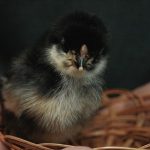Tuxedo quail, also known as Pharaoh quail, are a popular breed of quail that are often bred for their unique and attractive coloration. Tuxedo quail are known for their striking black and white plumage, making them a favorite among breeders and enthusiasts. Breeding Tuxedo quail can be a rewarding and enjoyable experience, but it requires careful planning, attention to detail, and a good understanding of the breeding process.
Breeding Tuxedo quail can be a profitable venture for those looking to raise quail for meat or eggs, or simply for those who enjoy keeping and breeding these beautiful birds as a hobby. In this comprehensive guide, we will explore the various aspects of Tuxedo quail breeding, including selecting breeding stock, housing and care, the breeding process and incubation, caring for chicks, health and nutrition, and tips for successful breeding. Whether you are a seasoned breeder or just starting out, this guide will provide you with the knowledge and tools you need to successfully breed Tuxedo quail.
Table of Contents
Key Takeaways
- Tuxedo quail breeding is a rewarding hobby that requires careful selection of breeding stock and proper care and housing.
- When selecting breeding stock, look for healthy, active birds with good coloration and markings.
- Provide spacious and well-ventilated housing for breeding quail, with nesting boxes and a balanced diet of high-quality feed.
- The breeding process involves natural mating or artificial insemination, followed by a 17-18 day incubation period for the eggs.
- After hatching, chicks should be kept warm, fed a high-protein diet, and provided with clean water and a safe environment.
- Regular health checks, proper nutrition, and a clean environment are essential for successful tuxedo quail breeding.
Selecting Breeding Stock
Selecting the right breeding stock is crucial to the success of your Tuxedo quail breeding program. When choosing breeding stock, it is important to select birds that are healthy, have good conformation, and exhibit the desired coloration and markings. Look for birds with strong, sturdy legs and feet, bright eyes, and smooth, glossy feathers. Avoid birds that appear sickly or have any signs of illness or deformities.
When selecting breeding stock, it is also important to consider the genetic diversity of the birds. Inbreeding can lead to genetic defects and health problems in the offspring, so it is important to choose breeding stock that is not closely related. Look for birds from different bloodlines to ensure genetic diversity and overall health of the offspring. Additionally, consider the temperament of the birds when selecting breeding stock. Choose birds that are calm, docile, and easy to handle, as these traits can be passed on to the offspring.
Housing and Care for Breeding Quail
Proper housing and care are essential for the health and well-being of your breeding quail. Tuxedo quail are relatively small birds, so they do not require a large amount of space. However, it is important to provide them with a clean, well-ventilated environment that is protected from predators and the elements. A secure coop or aviary with a solid floor and wire mesh walls is ideal for housing breeding quail. Provide plenty of nesting boxes or shelters for the birds to lay their eggs and seek refuge.
Quail are ground-dwelling birds, so it is important to provide them with a suitable substrate such as straw or wood shavings for nesting and scratching. Keep the housing area clean and dry, and provide fresh water and high-quality quail feed at all times. It is also important to provide the birds with access to natural light and fresh air, as these are essential for their overall health and well-being. Additionally, consider providing the birds with opportunities for dust bathing, as this is a natural behavior that helps keep their feathers clean and free of parasites.
Breeding Process and Incubation
The breeding process for Tuxedo quail begins with introducing the breeding stock to each other in a suitable breeding environment. It is important to provide the birds with plenty of space and privacy during the breeding season to encourage natural mating behavior. Once the birds have mated, the females will begin laying eggs in their nesting boxes or shelters. It is important to collect the eggs daily to prevent them from being damaged or eaten by the birds.
Once the eggs have been collected, they can be placed in an incubator for hatching. Tuxedo quail eggs typically take around 17-18 days to hatch, so it is important to carefully monitor the temperature and humidity levels in the incubator to ensure successful hatching. Keep the eggs in a warm, humid environment and turn them regularly to prevent the embryos from sticking to the shell. After around 17 days, the eggs will begin to hatch, and you will soon have a new generation of Tuxedo quail chicks.
Caring for Chicks
Caring for Tuxedo quail chicks requires special attention and care to ensure their health and well-being. Once the chicks have hatched, it is important to move them to a brooder box or enclosure that is warm, dry, and draft-free. Provide the chicks with a heat source such as a heat lamp or heating pad to keep them warm, as young chicks are unable to regulate their body temperature effectively. Additionally, provide the chicks with access to fresh water and high-quality chick starter feed formulated specifically for young quail.
Monitor the chicks closely for signs of illness or distress, and handle them gently to help them become accustomed to human interaction. It is important to keep the brooder box clean and dry at all times to prevent the chicks from developing health problems such as coccidiosis or respiratory infections. As the chicks grow, gradually introduce them to larger living quarters with access to outdoor space if possible. Provide them with plenty of enrichment such as perches, dust bathing areas, and toys to encourage natural behaviors and keep them healthy and active.
Health and Nutrition for Breeding Quail

Maintaining the health and nutrition of your breeding quail is essential for successful breeding and overall well-being of the birds. Provide your quail with a balanced diet that includes high-quality commercial quail feed supplemented with fresh fruits and vegetables. It is important to provide the birds with access to clean, fresh water at all times, as dehydration can quickly lead to health problems in quail.
Monitor your quail regularly for signs of illness or distress, such as lethargy, loss of appetite, or abnormal droppings. If you notice any signs of illness in your birds, consult with a veterinarian who has experience working with quail to determine the best course of action. Additionally, practice good biosecurity measures to prevent the spread of disease among your quail flock. Quarantine new birds before introducing them to your existing flock, and practice good hygiene when handling your birds or their eggs.
Tips for Successful Tuxedo Quail Breeding
Successfully breeding Tuxedo quail requires careful planning, attention to detail, and dedication. To increase your chances of success, consider implementing the following tips:
– Provide your breeding quail with a clean, well-maintained environment that meets their specific needs.
– Select breeding stock that is healthy, genetically diverse, and exhibits desirable traits such as coloration and temperament.
– Monitor your breeding quail closely for signs of illness or distress, and seek veterinary care when necessary.
– Provide your quail with a balanced diet that meets their nutritional needs and supports overall health.
– Handle your quail gently and provide them with opportunities for natural behaviors such as dust bathing and foraging.
– Practice good biosecurity measures to prevent the spread of disease among your quail flock.
– Keep detailed records of your breeding program, including mating dates, egg production, hatch rates, and any health issues that arise.
By following these tips and guidelines, you can increase your chances of successfully breeding Tuxedo quail and enjoy a rewarding and fulfilling experience as a quail breeder.
If you’re interested in learning more about tuxedo quail breeding, you might also want to check out this informative article on how long it takes for chicken eggs to hatch naturally. Understanding the incubation period is crucial for successful breeding and hatching of quail eggs.
FAQs
What is tuxedo quail breeding?
Tuxedo quail breeding refers to the process of breeding and raising tuxedo quails, a specific breed of quail known for their unique coloration and markings.
What are tuxedo quails?
Tuxedo quails are a breed of domesticated quail known for their distinctive black and white coloration, resembling a tuxedo. They are popular among breeders and enthusiasts for their ornamental value.
What is involved in tuxedo quail breeding?
Tuxedo quail breeding involves selecting healthy breeding stock, providing proper housing and nutrition, and managing the breeding process to produce healthy offspring with desirable traits.
What are some considerations for tuxedo quail breeding?
Considerations for tuxedo quail breeding include maintaining proper breeding ratios, providing suitable nesting and brooding conditions, and managing the health and genetics of the breeding stock.
What are the benefits of tuxedo quail breeding?
Tuxedo quail breeding can be a rewarding hobby and can also provide opportunities for producing ornamental quails for sale or exhibition. Additionally, it can contribute to the conservation of this unique quail breed.
Are there any challenges associated with tuxedo quail breeding?
Challenges of tuxedo quail breeding may include managing breeding ratios, addressing potential health issues, and ensuring proper care and housing for the quails and their offspring. Additionally, genetic diversity and maintaining desirable traits can be a consideration.
Meet Walter, the feathered-friend fanatic of Florida! Nestled in the sunshine state, Walter struts through life with his feathered companions, clucking his way to happiness. With a coop that’s fancier than a five-star hotel, he’s the Don Juan of the chicken world. When he’s not teaching his hens to do the cha-cha, you’ll find him in a heated debate with his prized rooster, Sir Clucks-a-Lot. Walter’s poultry passion is no yolk; he’s the sunny-side-up guy you never knew you needed in your flock of friends!







